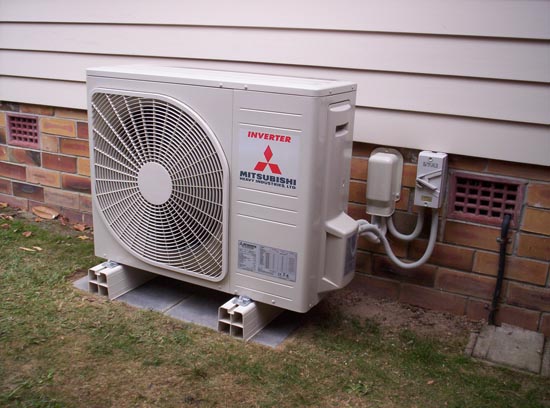HVAC (Heating, Ventilation, and Air Conditioning) methods consist of assorted components that work together to offer heating, cooling, ventilation, and control of indoor air quality. Here are the principle elements that make up an HVAC system:
1. Thermostat:
The thermostat is a management system that permits customers to set the desired indoor temperature. Modern thermostats can be programmable or smart, allowing for precise control and energy financial savings.
2. Furnace:
A furnace is a heating element that generates heat and warms the air. It can run on various fuels such as natural gasoline, oil, or electrical energy. The heated air is then distributed all through the building.
three. Heat Exchanger:
In a furnace, the warmth exchanger is an important component that transfers warmth from the combustion process to the air. It ensures that the combustion gases do not mix with the indoor air.
four. Evaporator Coil:
The evaporator coil is part of the indoor unit in air-con systems. It cools and dehumidifies the indoor air by absorbing heat. Local HVAC services passes over the evaporator coil, and the refrigerant inside the coil absorbs the warmth, cooling the air.
5. Condenser Coil:
The condenser coil is a half of the outside unit in air-con methods. It releases the heat absorbed by the refrigerant indoors into the outside air. The refrigerant releases the heat because it modifications from a high-pressure fuel to a liquid.
6. Compressor:
The compressor is a vital a half of the refrigeration cycle. It pressurizes the refrigerant fuel, raising its temperature. This high-temperature, high-pressure gas is then condensed into a liquid by the condenser coil.
7. Refrigerant Lines:
Refrigerant lines connect the indoor and out of doors models, allowing the refrigerant to move between the evaporator and condenser coils. These strains are important for the heat trade course of.
8. Ductwork:
Ductwork consists of a community of pipes or channels used to distribute heated or cooled air from the HVAC system to totally different rooms within a constructing. Properly designed and sealed ducts are essential for efficient air distribution.
9. Air Handler:
The air handler is part of the indoor unit and is liable for circulating conditioned air throughout the building. It accommodates the blower, filter racks, and generally the evaporator coil.
10. Vents and Registers:

Vents and registers are openings in walls, ceilings, or flooring where air is equipped or returned to the HVAC system. Supply vents distribute conditioned air into rooms, while return vents draw air again into the system for reconditioning.
eleven. Fan:
The fan is responsible for transferring air by way of the HVAC system. In heating mode, it distributes heat air generated by the furnace or heat pump. In cooling mode, it circulates cool air from the air conditioner.
12. Air Filters:
Air filters take away mud, pollen, and different particles from the air, making certain higher indoor air quality and stopping particles from entering the HVAC system's parts.
thirteen. Dampers:
Dampers are adjustable plates inside the ductwork that management the flow of air. They can be adjusted to stability airflow and control temperature distribution in several areas of the constructing.
14. Humidifier/Dehumidifier:
Humidifiers add moisture to the air in dry environments, enhancing indoor comfort. Dehumidifiers remove extra moisture, especially in humid climates, stopping issues like mildew development and improving indoor air quality.
15. Thermal Expansion Valve (TXV) or Expansion Device:
This valve regulates the move of refrigerant into the evaporator coil, permitting the refrigerant to broaden and cool rapidly, preparing it for the following cycle.
Proper design, set up, and upkeep of those elements are important for the efficient and reliable operation of an HVAC system. Regular maintenance, including cleansing or replacing filters, checking refrigerant ranges, and inspecting ductwork, is essential to ensure the system's longevity and energy effectivity..
